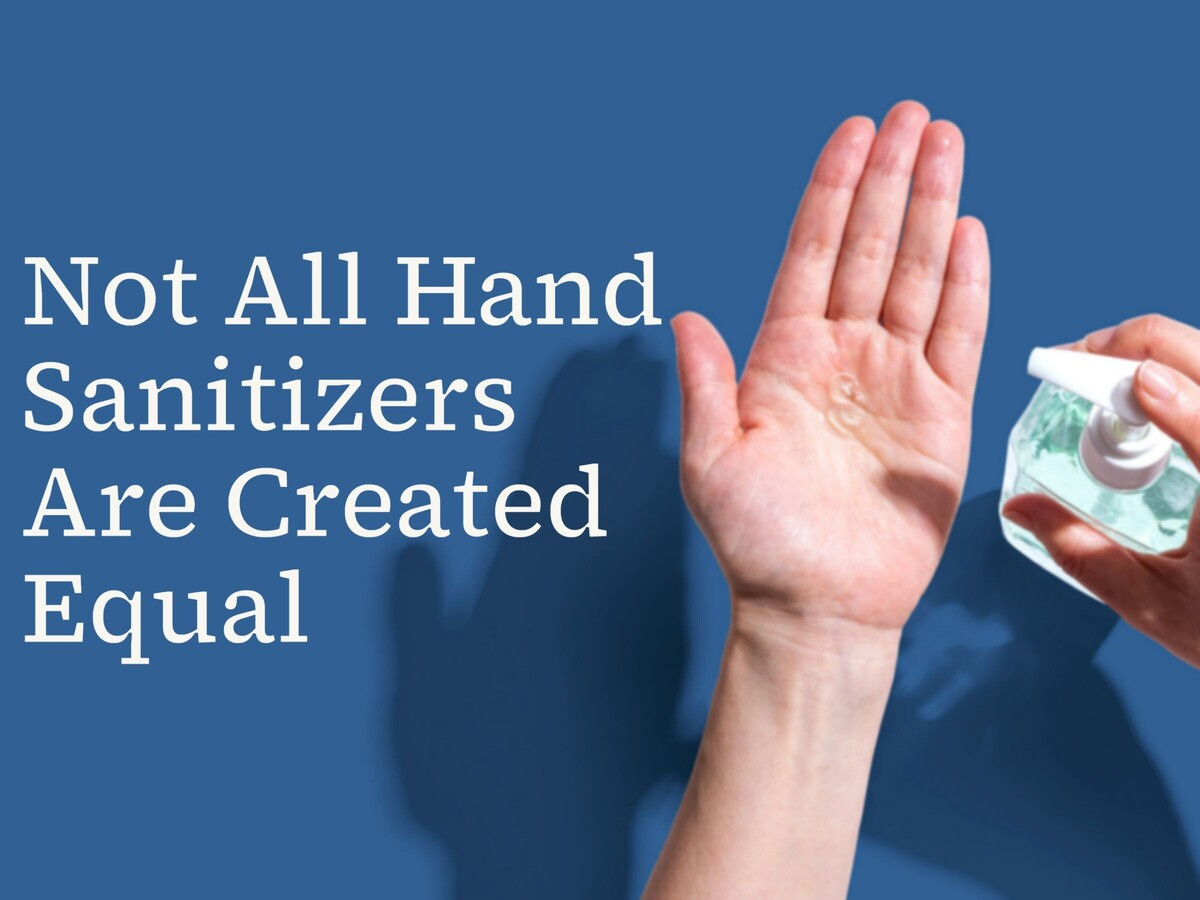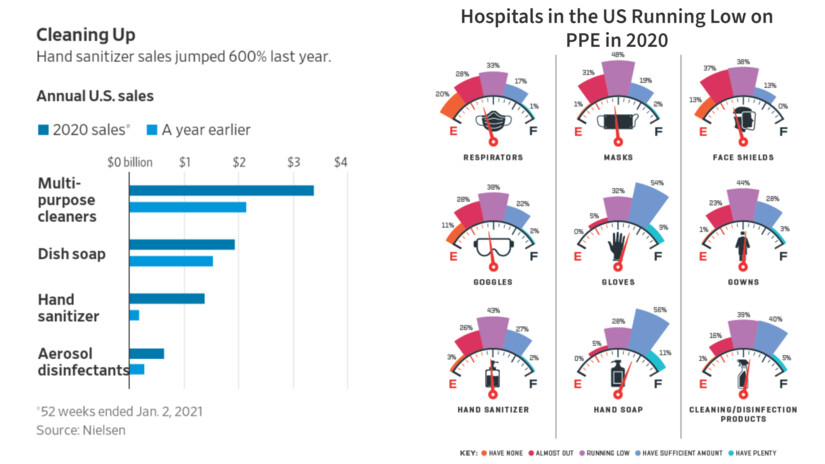Image


In 2020, as the pandemic gripped the U.S., demand for cleaning supplies skyrocketed. Between 2019 and 2020 annual U.S. sales of multi-purpose cleaners rose 58%, dish soap rose 26%, and aerosol disinfectants rose 120%.
But no cleaning product rose in demand more than hand sanitizer, which saw a 600% increase in annual U.S. sales from 2019 to 2020.
Panic from an impending virus drove the country to a hand sanitizer shortage, only further inflamed by rising prices of not only hand sanitizer but all forms of household cleaners and personal protective equipment (PPE).
 APIC conducted an online survey of its 11,922 U.S.-based infection preventionist members March 23-25, 2020. Results shown are based on responses from 1,140 infection preventionists located throughout the United States.
APIC conducted an online survey of its 11,922 U.S.-based infection preventionist members March 23-25, 2020. Results shown are based on responses from 1,140 infection preventionists located throughout the United States.As the country slowly crawls out of the pandemic, it appears as though our new obsession with hand sanitizer is here to stay – the market size is expected to grow at a CAGR of 14% during 2022-2031. Did you know that in Q4 2022, the U.S. hand sanitizer market share was valued at over $653 million?
While any and all forms of personal disinfectant continue to fly off the shelf at increasingly high prices, it may surprise you to know that not all hand sanitizers are created equal.
Take a look at the back of a bottle of hand sanitizer and you will likely see ingredients like ethyl or isopropyl alcohol. While both types of alcohol can be effective at killing germs and are used in a variety of healthcare settings as disinfectants and antiseptics, the two forms are not entirely synonymous in effect or usage.
Studies have found that both forms of alcohol are effective at killing germs when diluted with water to about 70% concentration. When buying hand sanitizer, be sure to check the label to make sure it contains at least 60% ethyl (sometimes called ethanol) or isopropyl (can also appear as 2-propanol) alcohol (sometimes simply labeled “alcohol”).
Ethyl alcohol, or ethanol, is the most common form of alcohol and it’s the type people consume in alcoholic beverages. Ethyl alcohol naturally occurs when yeast ferments with sugar. In addition to being used in drinks, it’s used in medical practices as a disinfectant and antiseptic. Ethanol is also a common additive to motor fuel, as a matter of fact, 98% of gasoline in the US contains ethanol.
Isopropyl alcohol, sometimes called “rubbing alcohol,” is also commonly used as an antiseptic and disinfectant. It’s also found in lotions, cosmetics, and face washes.
Again, both are effective, in water-diluted concentrations of about 70%, at killing bacteria, viruses, and other germs that can make you sick. However, each has its respective drawbacks, and one may be superior to the other.
Ethyl alcohol is effective in killing a large range of viruses, but that list doesn’t include viruses like hepatitis A or poliovirus.
Isopropyl alcohol isn’t as effective against a class of viruses called nonenveloped viruses but is effective at killing enveloped viruses. While the virus that causes COVID-19 is an enveloped virus and both ethyl and isopropyl alcohol are effective at killing it, ethyl alcohol may be more effective.
Furthermore, isopropyl alcohol causes significant damage to skin condition and function, while ethyl alcohol does not, making ethanol-based hand sanitizers best for frequent use on one’s skin.
According to the World Health Organization, ethyl alcohol is generally considered to be superior to isopropyl alcohol.
A final note, neither alcohol-based hand sanitizers are dangerous for children and babies when used correctly. However, drinking even small amounts of hand sanitizer can lead to alcohol poisoning and other serious health consequences including death.
Isopropyl alcohol is about twice as potent as ethyl alcohol; it’s estimated that a dose between 100 and 250 milliliters (3.4 - 8.5 fluid ounces) is lethal to humans.
Additionally, some hand sanitizers made outside the U.S. contain another highly toxic alcohol called methanol; consumption of methanol can lead to serious health consequences like vision loss, coma, seizures, and death. Remember, drinking even small amounts of isopropyl alcohol is poisonous to children and may lead to coma, seizures, dangerously low blood pressure, and death.